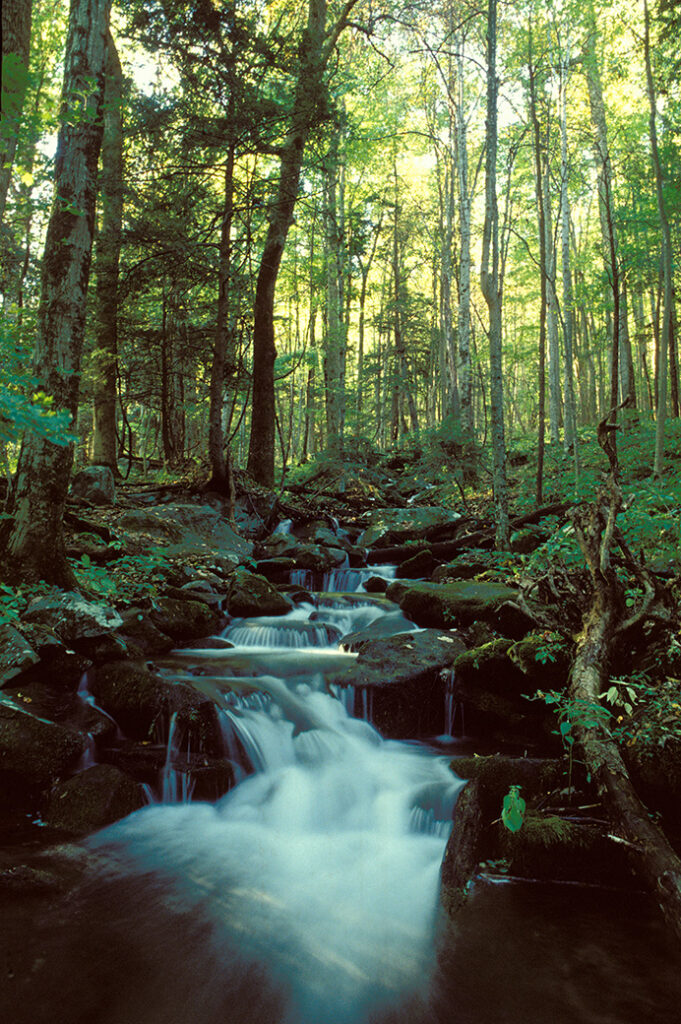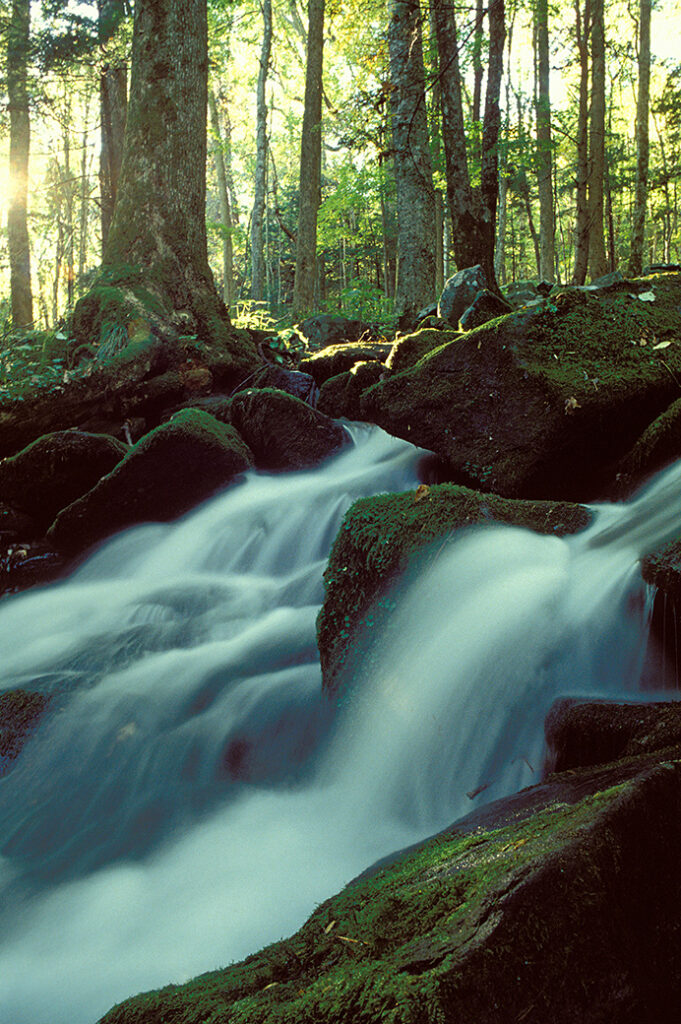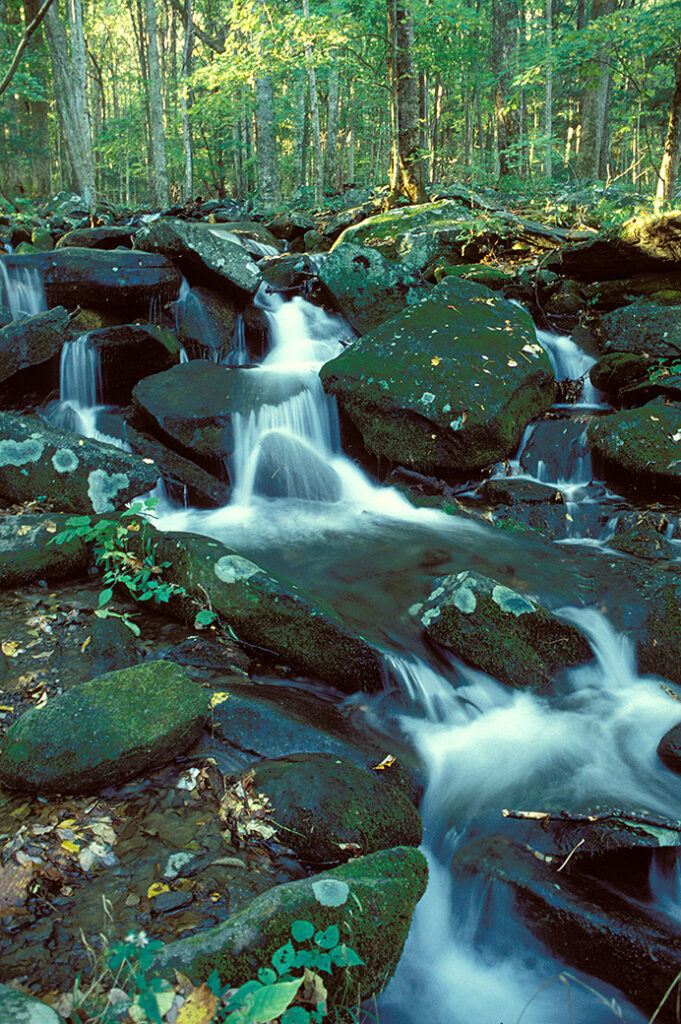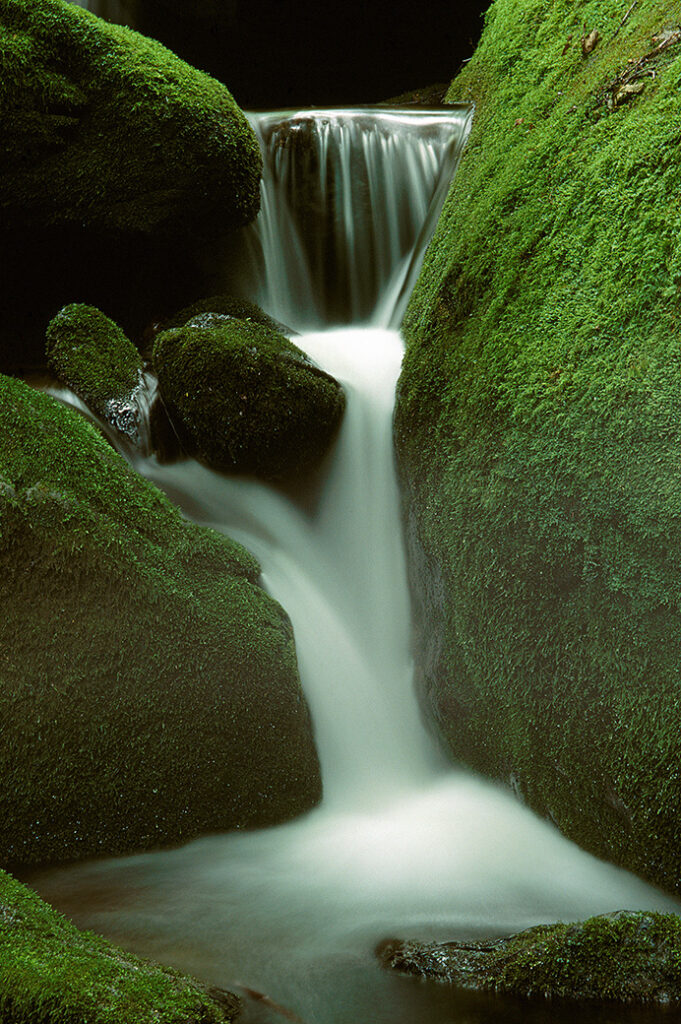Before we get into the mechanics of composition, let’s talk about why you’re taking the photograph to begin with. Something caught your eye enough to make you want to preserve the scene in a photograph – but are you photographing what caught your eye to begin with? If i were restricted to saying only one thing about composition, it would be this: Identify what it was that caught your eye – include everything that contributes to it – and exclude anything that distracts from it.
For example, during a trip to the mountains, a wet weather stream cutting through the woods caught my eye. “That’s great!”, I thought to myself, and gathered my gear and headed into the area to get some great photos. I just started shooting whatever was in front of the camera – but I knew that what I was getting wasn’t what I drew me to the location. It was time to slow down and think about it. I literally vocalized what it was that caught my eye – it was the way the water was running through the moss covered rocks. That’s what I wanted to photograph – not the leaves, or the trees, or the full stream, or the rocks with no moss. Now I knew what it was that I wanted and what I didn’t want to include in my photograph, making for a cleaner composition with no distractions – the viewer know exactly what this image is about.

Neat place – but this photo just doesn’t catch it the way I saw it.
Too much light streaming through the trees, logs and twigs sticking into the scene,
and one big green leaf that demands too much attention.

OK – so there’s light through the trees – maybe incorporate it with the stream?
Still not what I was really wanting.

Compose the shot to get rid of the sunlight, but these rocks look ugly.
Time to think about what it was that caught my eye.

That’s more like it! Once I realized what it was that caught my eye,
the stream rushing through mossy rocks,
I was able to compose an image that illustrated just that,
including everything that supported the definition of what caught my eye,
and excluding everything else that distracted from it.
